Characteristics of washing powders
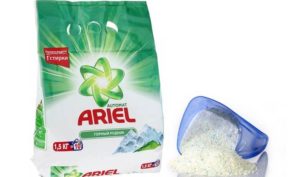 If you choose a laundry detergent based on packaging or price, you are unlikely to get perfectly clean clothes. On the contrary, you can discolor a new blouse or never wash off a greasy stain. To achieve optimal results, you must carefully study the composition and technical characteristics of washing powders before purchasing. Experienced housewives advise purchasing several brands at once and alternating depending on the dirt and type of fabric. Our detailed review will help you avoid getting confused in the abundance of brands and manufacturers.
If you choose a laundry detergent based on packaging or price, you are unlikely to get perfectly clean clothes. On the contrary, you can discolor a new blouse or never wash off a greasy stain. To achieve optimal results, you must carefully study the composition and technical characteristics of washing powders before purchasing. Experienced housewives advise purchasing several brands at once and alternating depending on the dirt and type of fabric. Our detailed review will help you avoid getting confused in the abundance of brands and manufacturers.
General properties
Finding powder in a store is not difficult: it is always located in the household chemicals department. The standard type is a dry synthetic mixture consisting of surfactants, bleaches, dyes, fragrances, salt ballast, enzymes and special substances designed to “bind” calcium and magnesium ions present in tap water. There are also more natural options based on baby soap and soda, which do not contain irritating phosphates, surfactants and bleaching components.
The composition of the powder determines its ability to wash and bleach. Bleaching agents are responsible for this, which can be:
- Optical. It is often added to inexpensive powders, but you should not expect any special effect from it. The effect is temporary, since it does not bleach things, but, due to luminescent substances, settles on the fabric and makes it “shine” under the sun’s rays.
- Oxygen. We are talking about chemical components - sodium perborate or percarbonate, which can penetrate the structure of the material and fight contaminants from the inside.The stain oxidizes because, under the influence of oxygen-containing substances, intramolecular bonds are destroyed, fibers are discolored and foreign bodies are removed. There is only one “but”: if the powder does not contain the TAED activator, then for perfect bleaching you will have to heat the washing water to 70-90 degrees.
Oxygen bleaches can be enhanced with other components, anionic surfactants and phosphates, due to which they more effectively remove dirt and completely disinfect linen.
It is worth paying attention to the presence of substances in the powder that suppress foam formation, as well as the addition of special water softeners to the mixture. Thanks to them, you can avoid scale and ensure complete rinsing and rapid dissolution. No less important is the biodegradability of packaging and detergent, which is also indicated on the product labeling.
For many people, it is fundamentally important that washing powder leaves a pleasant smell on clean laundry. Then you need to look for a flavoring agent in the composition, although most often manufacturers report the “deliciousness” of the product in the name, naming it accordingly, for example, “Lavender”, “Tea Rose” or “Sea Freshness”. Otherwise, the washed items will smell like soap.
But it is still impossible to find a product with the ideal composition: natural mixtures do not remove complex and old stains, and aggressive components can settle on clothes and cause allergies. The best solution would be to purchase several products suitable for specific items and different types of stains. And the larger the home range of “versatile” powders, the cleaner the clothes will be. So, it is recommended to have bleach and a pack for white, colored and children's underwear.
Classification of detergents
For the convenience of consumers, manufacturers immediately divide their products into types intended for hand washing or automatic washing, synthetic or delicate, white or colored, children's underwear or workwear. Knowing the main types, you can quickly choose the right product and not make a mistake with the final result. First of all, powders are separated depending on the type of fabric. So, you can find formulations specially selected for:
- Wool and silk. This includes other delicate, soft and thin materials, for which only high-quality mixtures of primary alkyl sulfates, sodium sulfate and with a minimum content of alkyl lamides are suitable. Sometimes bicarbonates may appear in the composition, creating a slightly alkaline environment for effectiveness at temperatures up to 30 degrees.
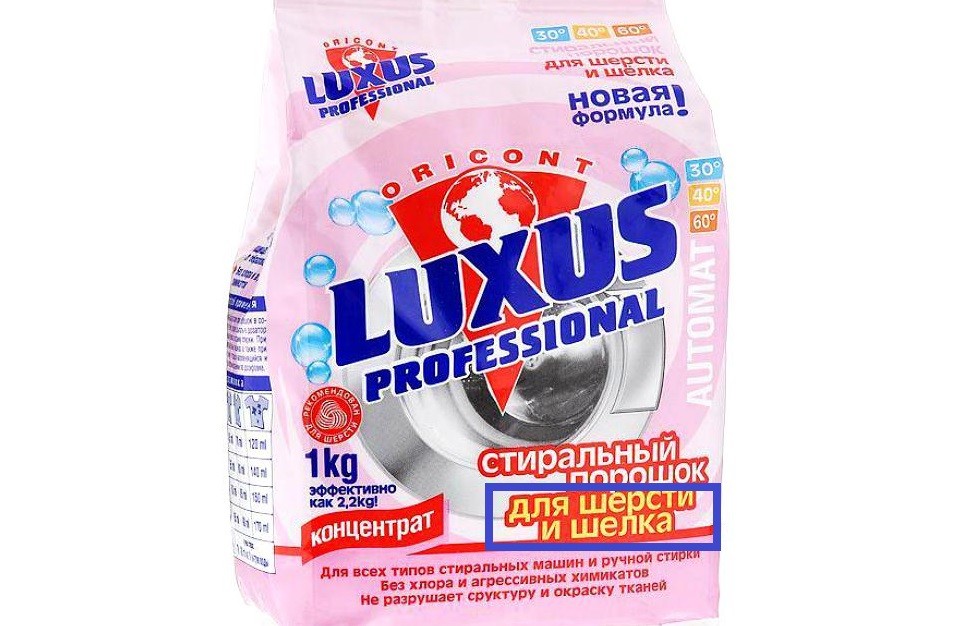
- Mixed fabrics. These are so-called universal products consisting of alkyl sulfates, alkydaryl sulfonates with the obligatory presence of optical brighteners. Here, a lot depends on the degree of water heating: to carefully clean delicate materials, it is necessary to prevent heating above 45 degrees, and synthetics, cotton and linen can only be washed by boiling.
- Cotton and linen linen. These products are distinguished by the addition of soda ash, which creates a strong alkaline environment.
It is strictly forbidden to use compositions intended for cotton and linen to wash woolen items, since increased alkalinity will destroy the keratin, the pile will fade and the fabric will become thin.
- Dense and rough textures (like workwear). This kind of clothing can only be washed using aggressive surfactants and phosphates.
Depending on the properties of laundry detergents, they are divided according to their intended purpose. Thus, some compositions are intended for soaking, others for washing heavily soiled items or bleaching. There are also powders for disinfection, making the material wrinkle-resistant and antistatic.
Detergents also differ in how they are used. Universal mixtures can be used in automatic machines, in activator-type machines, in hand washing, and on an industrial scale. Special ones, on the contrary, are intended only for one of the mentioned units. Some powders boast additional capabilities. They can:
- have a complex effect;
- bleach;
- disinfect;
- tint blue;
- remove static electricity;
- soften laundry to make further ironing easier.
As a rule, all the features of the powder are clearly explained by its packaging. Manufacturers indicate with inscriptions the scope of application of the product and possible additions.. Sometimes special designations are used, for example, mixtures for machine washing have a schematic image of an automatic machine on the box or pack.
Knowing the comparative characteristics of the powder and the decoding of all the inscriptions printed on the packaging, you can quickly choose the right product without overpaying or damaging your laundry. The main thing is not to neglect the composition and recommendations of the manufacturer.
Interesting:
Reader comments
- Share your opinion - leave a comment
Categories
Washing machine repair


For buyers

For users

Dishwasher

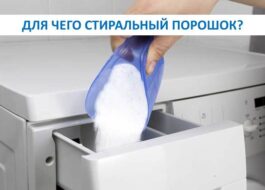

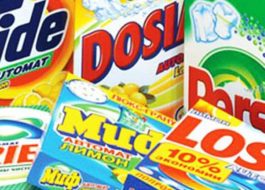

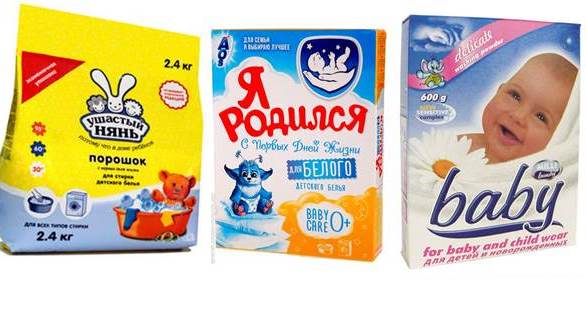











Add a comment